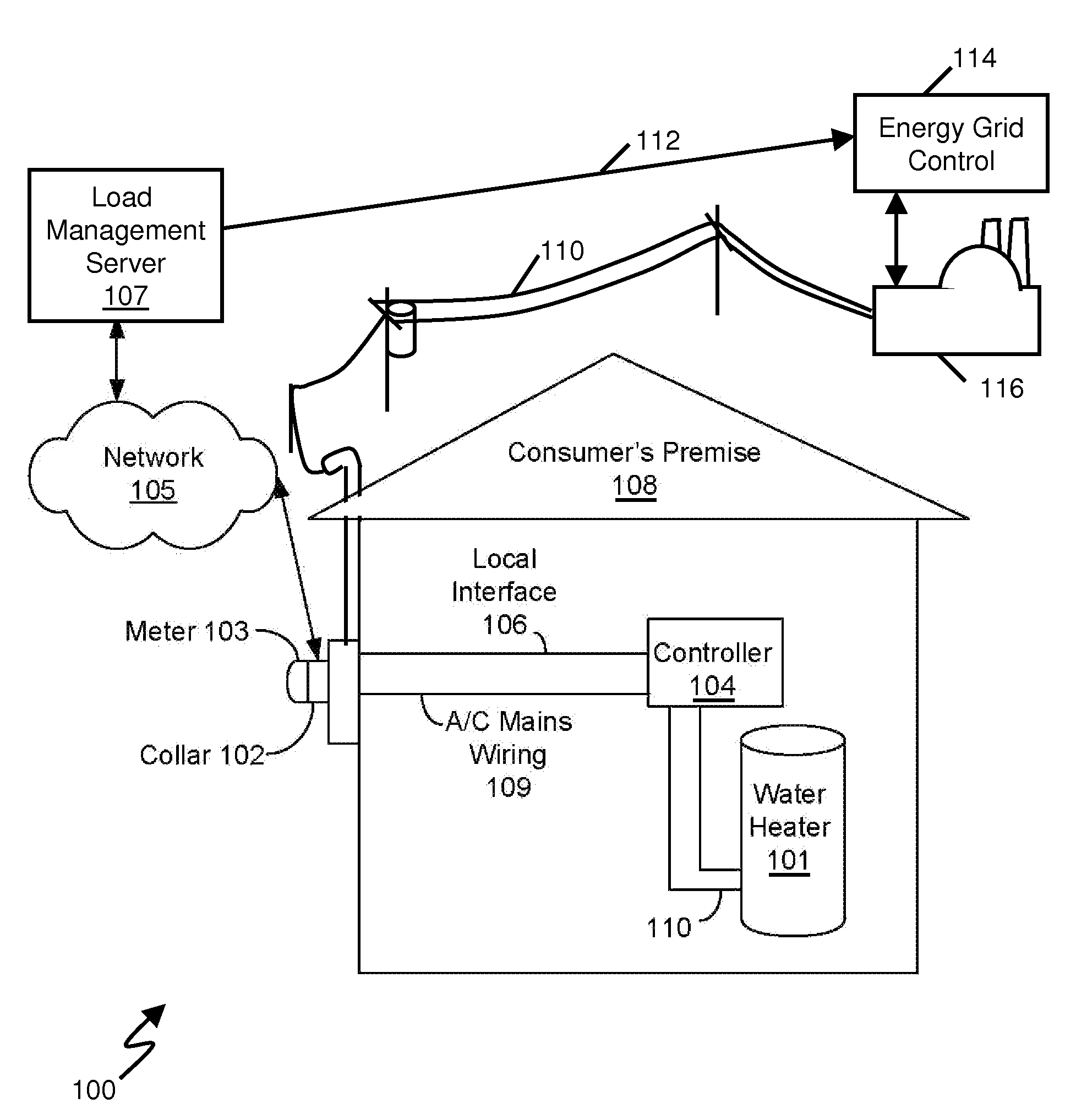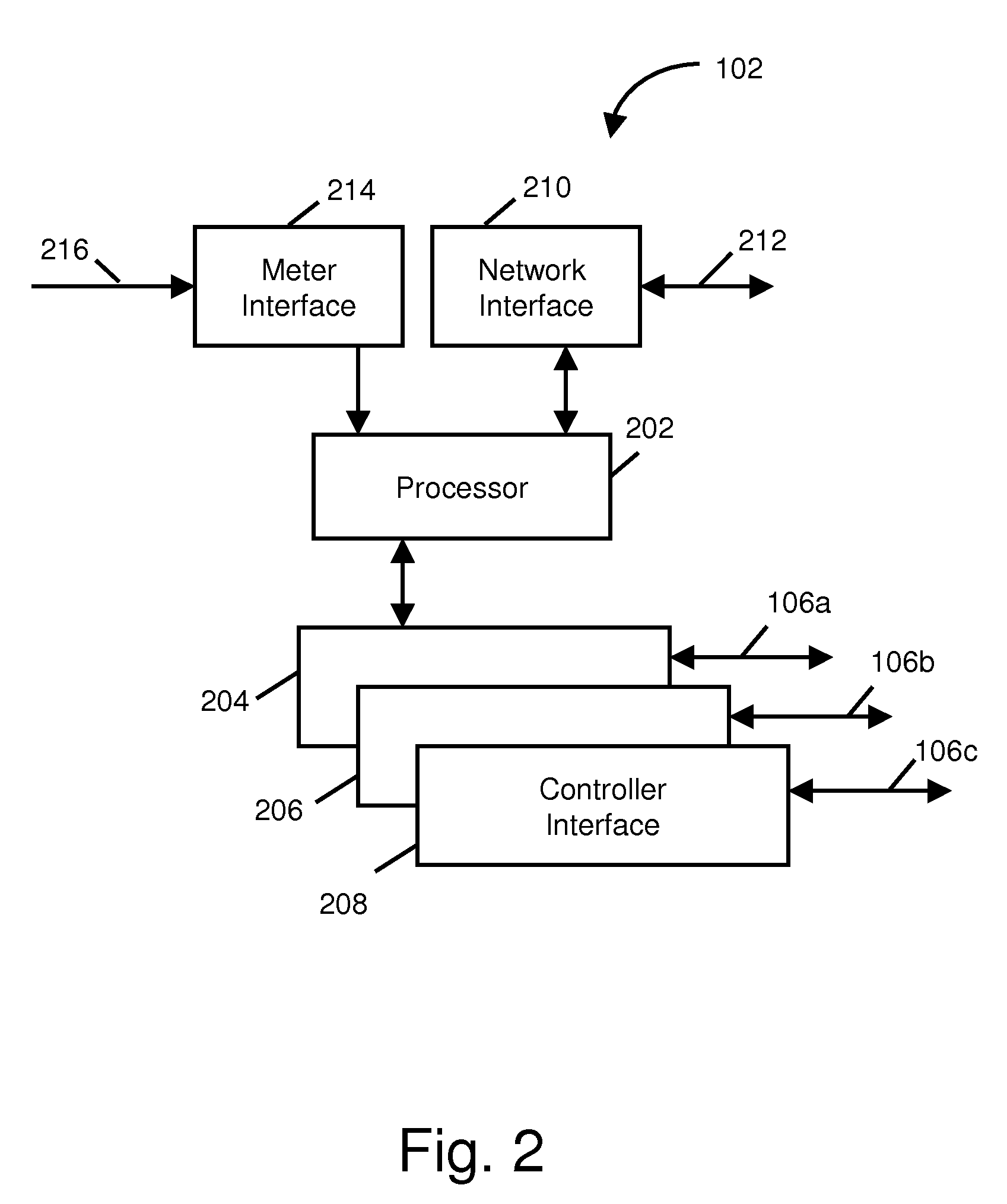Water Heater Demand Side Management System
a management system and water heater technology, applied in domestic heating, liquid/fluent solid measurement, process and machine control, etc., can solve the problems of inability to verify upstream communication, and inability to provide upstream communication
- Summary
- Abstract
- Description
- Claims
- Application Information
AI Technical Summary
Benefits of technology
Problems solved by technology
Method used
Image
Examples
Embodiment Construction
[0039]The system described here allows the power utility providers to shift energy demand due to hot water heating from on-peak time windows to off-peak windows while providing the end user with the level of service (i.e., availability of hot water) to which they have become accustomed. This shift of demand from on-peak time windows has the effect of reducing the peak to average ratio (i.e., crest factor) of energy demand on a utility's system, which in general allows for a more efficient usage of the utility's resources and allows generation to be shifted to the most efficient production plants available. The demand shift reduces the average production cost of energy (i.e., average cost of a kW-hour) and may delay or completely eliminate the need to build new power generation facilities. Shifting the demand also reduces the impact on the environment by reducing the carbon emissions.
[0040]This system enables an electrical utility to move a significant load ( 12%-18% ) which is due t...
PUM
 Login to View More
Login to View More Abstract
Description
Claims
Application Information
 Login to View More
Login to View More - R&D
- Intellectual Property
- Life Sciences
- Materials
- Tech Scout
- Unparalleled Data Quality
- Higher Quality Content
- 60% Fewer Hallucinations
Browse by: Latest US Patents, China's latest patents, Technical Efficacy Thesaurus, Application Domain, Technology Topic, Popular Technical Reports.
© 2025 PatSnap. All rights reserved.Legal|Privacy policy|Modern Slavery Act Transparency Statement|Sitemap|About US| Contact US: help@patsnap.com



